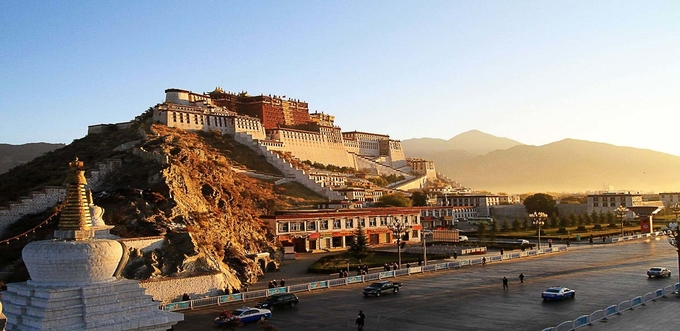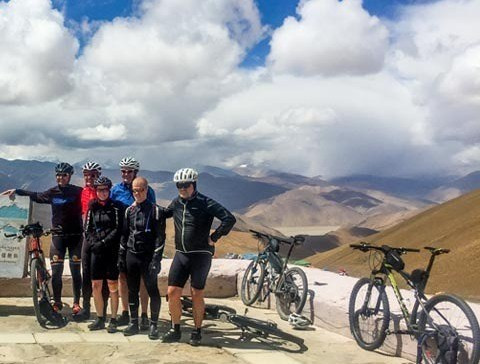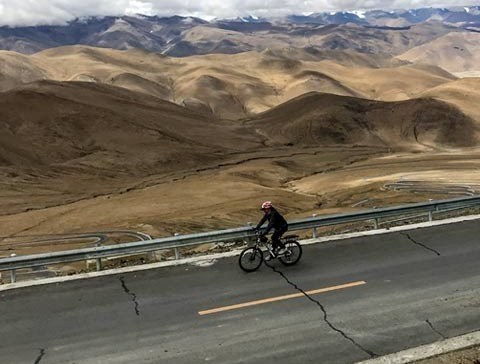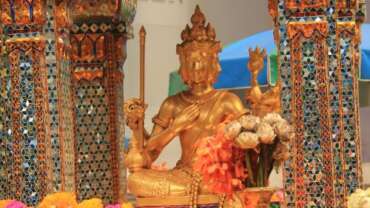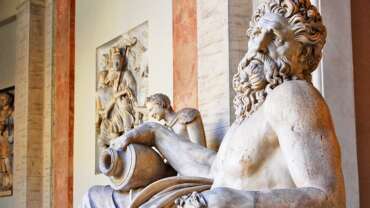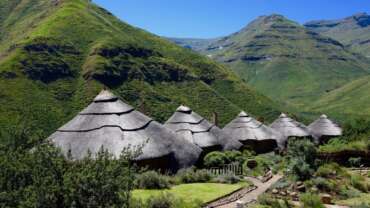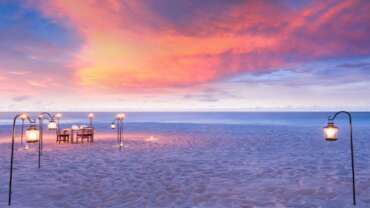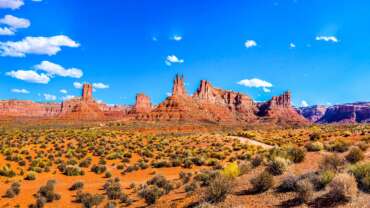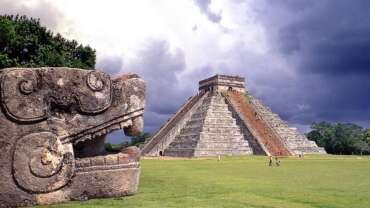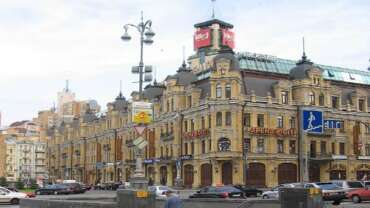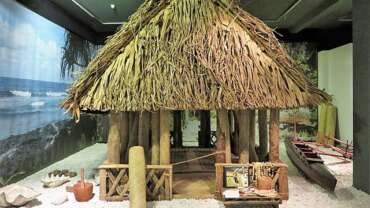Tibet Charity Challenges
Tibet, being known as the Roof of the World, is the highest place to heaven, with an average elevation of 4,900 meters. Located in a plateau north of the Himalayas, it is a mysterious, exotic place that many outsiders yearned for. Since the beginning of the 20th century, the massive, tranquil land with its majestic scenery and mysterious religious culture has exerted an awesome draw on travelers. If it’s your first time in Tibet, you cannot miss the top attractions listed below, because they represent the most authentic Tibet.
Tibet is the referred real Shangri-La, the forbidden land, the roof of the world and the holy land of your innermost desire. Snow mountains and grasslands, scattered herds of yak and nomads on the plateau, spectacular monasteries and unsophisticated smiles, tranquil lake and transparent blue sky, all can be seen on this magic land. Tibet is a province of natural wonder, a treasury of cultural relics and a destination of attractive adventure.
Located on the Qinghai-Tibet Plateau at the southwest frontier of China, Tibet covers an area of 1.2 million sq km which is 4,000 meters above sea level at an average and has over 50 peaks more than 7,000 meters. So it known as the ‘the roof of the world’ or ‘the third pole on the globe’. Geographically, Tibet can be divided into three parts: the east, south and north. The eastern part is virgin forest region, the northern part is open grassland, and the southern part is the one for agriculture. And administratively, Tibet is divided into one municipality and six prefectures, with Lhasa its municipality and Shigatse, Ngari, Shannan, Chamdo, Nagqu as well as Nyingchi. The major cities and towns such as Lhasa, Shigatse, Gyantse and Tsedang located in the central and southern area.
History of Tibet
Tibet has a rich history as a nation, existing side-by-side with China for centuries. In 1950, the newly established Chinese Communist regime decided that Tibet must become a permanent part of the People’s Republic of China and launched an invasion.
For China, possessing Tibet gave access to rich natural resources and allowed it to militarise the strategically important border with India. With 40,000 Chinese troops in its sparsely populated country, the Tibetan government – led by the still teenaged Dalai Lama – was forced to recognise China’s rule in return for promises to protect Tibet’s political system and Tibetan Buddhism.
China failed to keep its promises and ongoing Tibetan resistance came to a head on 10 March 1959. Hundreds of thousands of Tibetans surrounded the Potala Palace in Lhasa fearing that the Dalai Lama was about to be kidnapped or assassinated. The uprising was brutally suppressed and the Dalai Lama was forced to flee into exile.
The 10th of March is now commemorated as National Uprising Day by Tibetans and supporters across the world.
To this day Tibet remains an independent state under illegal occupation.
People of Tibet
Population composition
The population of the region is almost entirely Tibetan, with Han (Chinese), Hui (Chinese Muslims), Monba, Lhoba, and other minority nationalities. Thus, the majority of the people of Tibet have the same ethnic origin, have traditionally practiced the same religion, and speak the same language.
The Tibetan and Burmese languages are related, although they are mutually unintelligible in their modern forms. Spoken Tibetan has developed a pattern of regional dialects and subdialects, which can be mutually understood. The dialect of Lhasa is used as a lingua franca. There are two social levels of speech—zhe-sa (honorific) and phal-skad (ordinary); their use depends upon the relative social status of the speaker and the listener. The use of Chinese has become more common in the region since the 1960s.
Tibetan is written in a script derived from that of Indian Gupta about 600 ce. It has a syllabary of 30 consonants and five vowels; six additional symbols are used in writing Sanskrit words. The script itself has four variations—dbu-can (primarily for Buddhist textbooks), dbu-med and ’Khyug-yig (for general use), and ’bru-tsha (for decorative writing).
Bon is considered to be the first known religion in Tibet, although there is some argument as to the time of its establishment. It is a form of shamanism, encompassing a belief in gods, demons, and ancestral spirits who are responsive to priests, or shamans. With the rise of Buddhism, Bon adopted certain Buddhist rituals and concepts, and the Buddhists also adopted certain features of Bon, so that the two religions came to have many points of resemblance.
Although Chinese Buddhism was introduced in ancient times, the mainstream of Buddhist teachings came to Tibet from India. The first Buddhist scripture may have arrived in the 3rd century ce, but active promulgation did not begin until the 8th century. In later centuries numerous Buddhist sects were formed, including the Dge-lugs-pa, which emphasizes monastic discipline; also known as the Yellow Hat sect, in the 17th century it gained political supremacy that lasted until 1959.
The overwhelming majority of Tibetans traditionally have been Buddhists. Before the 1950s, prayer flags flew from every home and adorned the mountain slopes. Monasteries were established throughout the country, and the Dalai Lama, the spiritual head of Tibetan Buddhism, was the supreme political head of the nation. A minority, however, were adherents of Islam, Hinduism, Bon, or Christianity. The Dalai Lama went into exile in 1959 after the outbreak in Tibet of an armed rebellion against Chinese authorities that was suppressed by the Chinese army. Since then the Chinese at times have attempted to eliminate the influence of religion in Tibetan life.
Art & Culture of Tibet
In Tibet, you will always be amazed by the artistic wonders: the architectures, the prayer-flags, sculptures and Thangkas, songs and dances, which are representation of the Tibetan cultures. Tibetan arts have gone through a 5000 years of history. The prehistoric art was closely bound up with the aboriginal Bon religion, while its later development relied greatly on the Tibetan Buddhist culture. Therefore, it has been imbued with strong ethnic and regional features.
Bon is the main aboriginal religion during the prehistoric civilization on Qinghai-Tibetan Plateau, which was established in the 5th century B.C. by Shenrab Miwoche, the prince of Zhang-zhung kingdom in western Tibet. Around the first century A.D. the religion began to spread eastward until fully distributed in Tsang region and Lhasa region. This marked its first zenith when it almost dominated the political, economic and cultural life in the early stage of the Tubo Kingdom. Bon advocated pantheism and believed that “every thing has a soul”. The deities, the supernatural powers of mountains, rivers, lakes, seas, the sun, the moon, stars, wind, rain, thunder, lightening, birds, and beast, etc. as many as one can enumerate, govern the birth, ageing, sickness, death, events and fortune of people, who could not predict and control their own destinies because people are believed to be created by the deities.
In the 7th century A.D., Buddhism was introduced to Tubo Kingdom on a large scale and Bon lost its dominance in the mid 8th century. Tibetan Buddihism has been ramified into four major sects: Nyingma Sect, Kadam Sect, Sakya Sect, Kagyu Sect and Gulug up to the 15th century. These sects had later on brought significant and extensive impacts on political, economic and cultural life of Tibetan people in progression of different period of time.
The Tibetan arts have been inevitably dyed with a distinctive religious arts, especially the Tibetan Buddhist ones, have constituted the main body of the Tibetan arts and made it stand out in utterly different way among the others.
Buddha is the sovereign of the realm of Tibetan Buddhism, and is the most frequently occurred figure in Tibetan art works as well. The major subject matters of Tibetan arts include Buddha, Bodhisattvas and a Variety of Deities, the mandala, the Gurus and Dharma Kings, the biographic Stories and Jataka Stories of Sakyamuni.
The major art forms are composed of Tibetan Architectures including Ancient Tomb Architectures, Monastery Architectures, Palace Architectures, Tibetan Residence Architectures; Tibetan Sculptures including Buddhist Sculptures, Metal Sculptures, Clay Modelings, Stone Carvings, Tibetan Paintings including Thangka, fresco, rock drawing and contemporary painting; Tibetan Handicrafts, Metal Wares, Masks, Block-Printing, Textiles Handicrafts and Wooden Wares.



